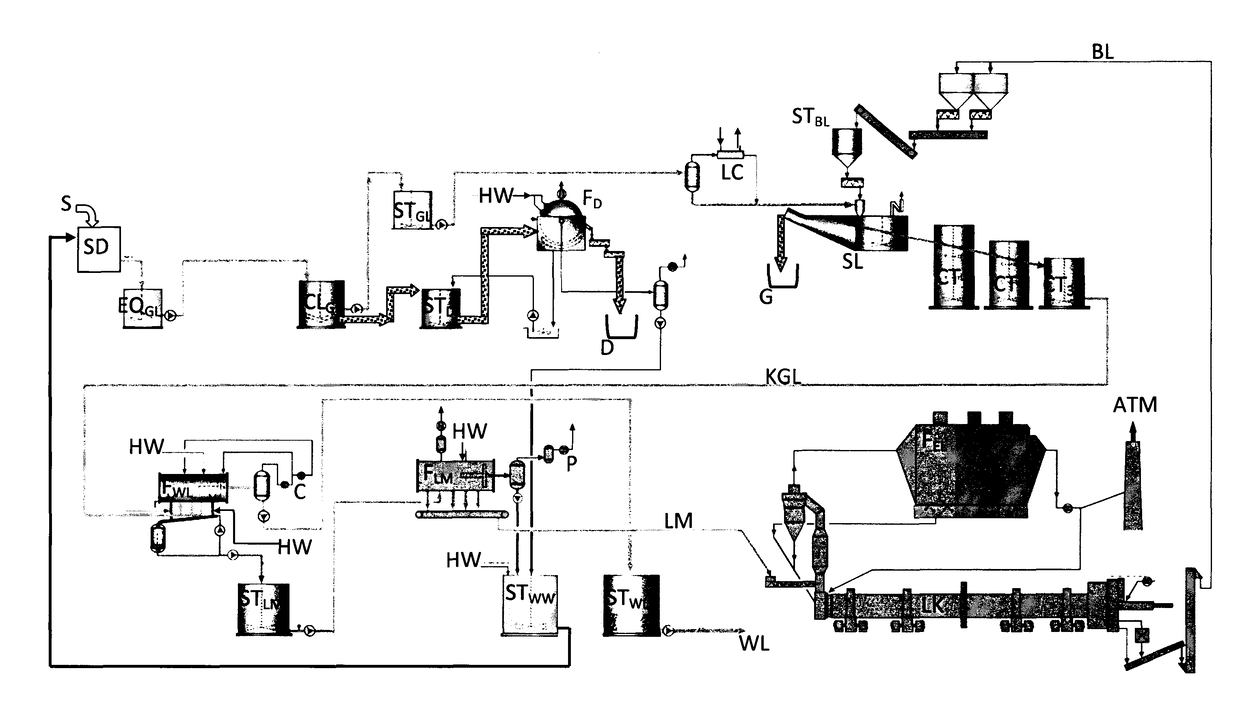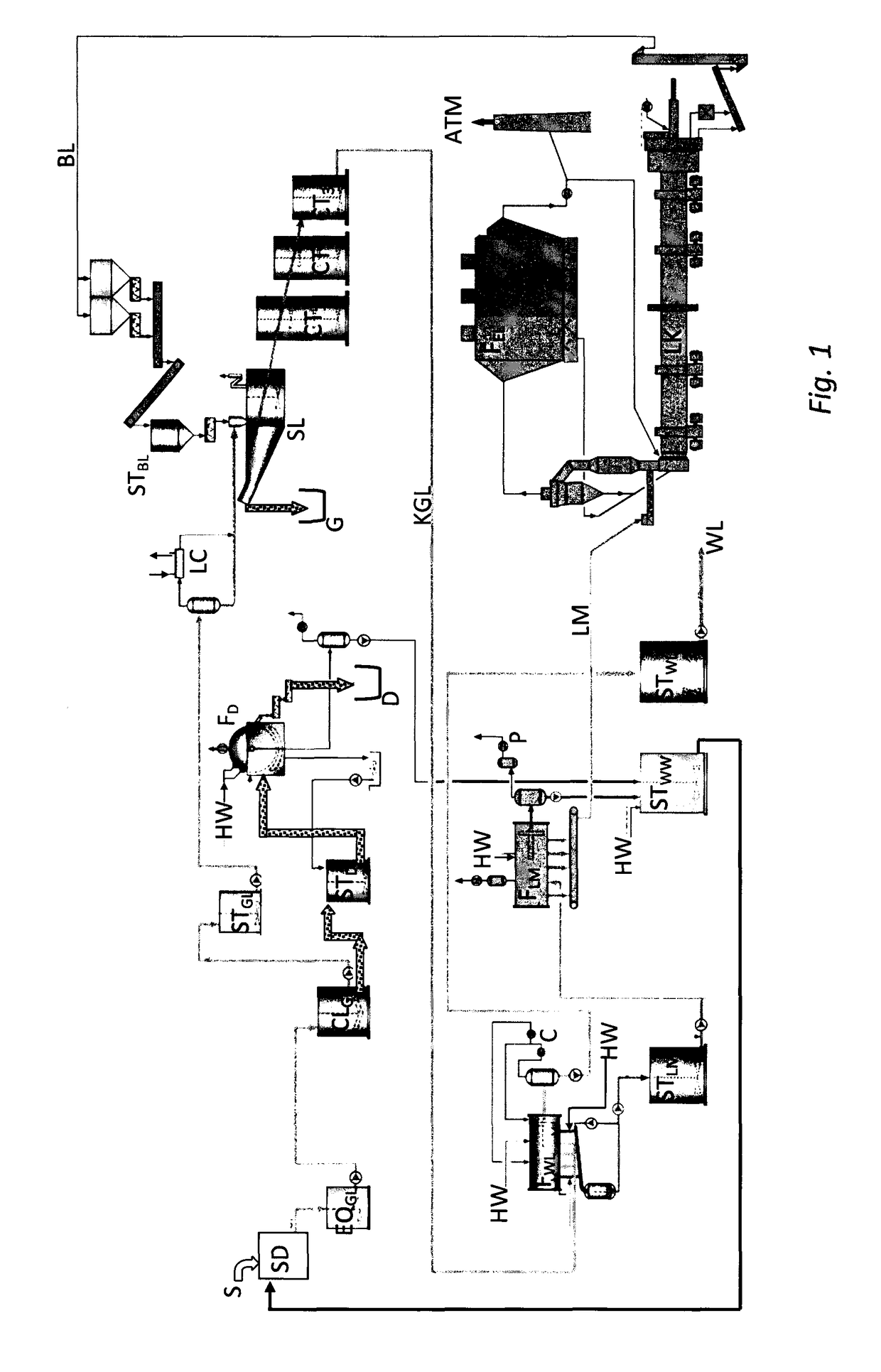Method and apparatus for obtaining strong white liquor and lime mud with low residual alkali level
a technology of white liquor and lime mud, which is applied in the direction of lime production, separation process, filtration separation, etc., can solve the problems of low residual alkali content, difficult operation, and inability to meet the requirements of continuous mill operation, so as to reduce the residual alkali content of the filter media, the effect of reducing the residual alkali content and reducing the emissions of the lime kiln
- Summary
- Abstract
- Description
- Claims
- Application Information
AI Technical Summary
Benefits of technology
Problems solved by technology
Method used
Image
Examples
Embodiment Construction
[0046]In FIG. 3a is shown a 2-stage white liquor filter 10 according to the invention that could replace the white liquor filter in FIG. 1 in order to reduce TRS emissions in the flue gases from the lime kiln. The causticized green liquor KGL is fed by a slurry pump SP1 to a first vat part 10a separated from a second vat part 10b by a dividing wall 20. The wall 20 may as shown extend up to the bottom part of the shaft 30 and thus form a common gas phase above the wall 20. A liquid level of causticized green liquor KGL is established below a lime mud chute opening 41a. The entire filter is pressurized by mill air PMA and a differential pressure over the filter elements is provided by a compressor C connected with the suction side to liquor separation tanks 51 and 52 and feeds pressurized gas to the gas phase of the filter as shown. In the first vat part is the shaft 30 rotated by the drive means M and thus also the filter discs connected to the shaft. The strong white liquor is filte...
PUM
| Property | Measurement | Unit |
|---|---|---|
| atmospheric pressure | aaaaa | aaaaa |
| atmospheric pressure | aaaaa | aaaaa |
| boiling temperature | aaaaa | aaaaa |
Abstract
Description
Claims
Application Information
 Login to View More
Login to View More - R&D
- Intellectual Property
- Life Sciences
- Materials
- Tech Scout
- Unparalleled Data Quality
- Higher Quality Content
- 60% Fewer Hallucinations
Browse by: Latest US Patents, China's latest patents, Technical Efficacy Thesaurus, Application Domain, Technology Topic, Popular Technical Reports.
© 2025 PatSnap. All rights reserved.Legal|Privacy policy|Modern Slavery Act Transparency Statement|Sitemap|About US| Contact US: help@patsnap.com



